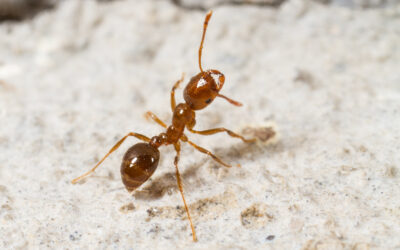
WARNING Important Safety Information (See full prescribing information for complete boxed warning.)
Intended for use only by licensed health care provider experienced in administering allergenic extracts and trained to provide immediate emergency treatment in the event of a life-threatening reaction. Observe patients for at least 30 minutes following administration. Immunotherapy may not be suitable for patients with medical conditions that reduce their ability to withstand a systemic reaction. Allergenic extracts can cause serious systemic reactions; including anaphylactic shock and in rare cases death, especially in patients who have severe or steroid-dependent asthma, cardiovascular disease, or in patients who use beta blockers. Do not inject intravenously. Additionally, the reconstituted single venom products are intended for subcutaneous injection for immunotherapy and percutaneous use for diagnosis. The Mixed Vespid venom protein is for immunotherapy only, not for diagnosis. Diagnosis should be based on individual venoms. Refer to contraindications, warnings, precautions, adverse reaction and over dosage for more detailed information.
The Complex Landscape of Allergies in the US
Allergies are caused by a immune system response to substances like pollen, pet dander, and certain foods. These responses can range from mild discomfort to severe, life-threatening reactions. While allergies are common globally, the factors influencing their prevalence and intensity vary. In the US, a combination of genetics, environmental conditions, and lifestyle factors creates a unique environment when it comes to allergies.
Factors Affecting Allergy Prevalence and Severity
Genetics and Population Diversity

Environmental Triggers and Urbanization
Additionally, regional differences play a role in allergy severity and allergy type. Every region has allergies, but the triggers vary based on the environment, rather than the population. The only difference found between regions is that children in southern states aged one to five years old are more prone to allergies than their peers in other regions. The states with higher prevalence for young childhood allergies include: Texas, Oklahoma, Louisiana, Arkansas, Tennessee, Kentucky, Mississippi, Alabama, Georgia, West Virginia, Virginia, North Carolina, South Carolina, and Florida.7
Climate Change
One of the most significant drivers of increasing allergy prevalence in the US is climate change. Rising temperatures extend pollen seasons which leads to higher pollen production. Ragweed, a notorious allergen, thrives under these conditions. Studies have shown that allergy seasons in the US have extended by 20 days or more in certain areas, intensifying allergy symptoms for millions of Americans.
How Do Allergy Rates in the US Compare Globally?
- Hay fever: The US has a higher prevalence for hay fever compared to other countries, likely due to differences in climate and vegetation.
- Food allergies: Peanut allergies are notably more common in the US, possibly due to early exposure patterns and dietary habits.8
In contrast, countries in Asia often report lower rates of hay fever but higher rates of skin allergies, although this is changing along with the climate.9 These variations are influenced by genetics, diet, and environmental conditions.
Trends Over Time
- Hygiene hypothesis: The idea that cleaner environments reduce exposure to microbes, leading to an overactive immune system.10
- Lifestyle changes: Sendentary lifestyles and processed diets may impact immune health, making people more susceptible to allergies.
- Indoor air quality: Americans spend a significant amount of time indoors, where allergens like dust mites, mold, and pet dander thrive. Poor ventilation in modern buildings exacerbates these issues, creating an environment ripe for allergic reactions.12
- Healthcare access and diagnosis rates: The US healthcare system plays a dual role. On one hand, advanced diagnostic tools and treatments are widely available, leading to earlier and more frequent diagnoses. On the other hand, the high cost of healthcare can limit access for many, leaving alelrgic conditions untreated.13

So, Are Allergies Worse in the US?
The answer isn’t straightforward. Allergies in the US are influenced by a mix of genetic diversity, environmental factors, and societal behaviors that make them feel more severe or widespread. While the US faces unique challenges like high pollen counts and climate-driven changes, it also benefits from advanced healthcare, such as allergy immunotherapy.
Understanding the complexities of allergies is the first step towards better management. At HollisterStier Allergy, we are committed to elevating allergy care to empower allergists and ultimately benefit their patients. Request a quote today to see how we are supporting allergists and their patients here in the US.
Article References
- Chalabi, Mona. “The Unlucky People Who Are More Likely to Have Seasonal Allergies.” The Cut, 28 June 2016, www.thecut.com/2016/06/the-unlucky-people-who-are-more-likely-to-have-seasonal-allergies.html. Accessed 19 Nov. 2024.
- Wegienka, Ganesa, et al. “Racial Differences in Allergic Sensitization: Recent Findings and Future Directions.” Current Allergy and Asthma Reports, vol. 13, no. 3, 26 Feb. 2013, pp. 255–261, https://doi.org/10.1007/s11882-013-0343-2. Accessed 17 Sept. 2019.
- Yang, James J., et al. “Differences in Allergic Sensitization by Self-Reported Race and Genetic Ancestry.” Journal of Allergy and Clinical Immunology, vol. 122, no. 4, Oct. 2008, pp. 820-827.e9, https://doi.org/10.1016/j.jaci.2008.07.044. Accessed 16 Apr. 2023.
- Jiang, Jialing, et al. “Racial, Ethnic, and Socioeconomic Differences in Food Allergies in the US.” JAMA Network Open, vol. 6, no. 6, 14 June 2023, p. e2318162, jamanetwork.com/journals/jamanetworkopen/fullarticle/2806015?utm_source=For_The_Media&utm_medium=referral&utm_campaign=ftm_links&utm_term=061423, https://doi.org/10.1001/jamanetworkopen.2023.18162.
- Portelli, M. A., et al. “Genetic Risk Factors for the Development of Allergic Disease Identified by Genome-Wide Association.” Clinical & Experimental Allergy, vol. 45, no. 1, 26 Dec. 2014, pp. 21–31, https://doi.org/10.1111/cea.12327. Accessed 5 June 2019.
- Gisler, Amanda. “Allergies in Urban Areas on the Rise: The Combined Effect of Air Pollution and Pollen.” International Journal of Public Health, vol. 66, 4 May 2021, https://doi.org/10.3389/ijph.2021.1604022. Accessed 7 Dec. 2021.
- “Prevalence of Allergies the Same, regardless of Where You Live.” National Institutes of Health (NIH), 10 July 2015, www.nih.gov/news-events/news-releases/prevalence-allergies-same-regardless-where-you-live. Accessed 21 Nov. 2024.
- Wilkin, David Anderson, Rebecca. “Why so Many Americans Are Allergic to Peanuts.” Business Insider, www.businessinsider.com/america-high-rate-peanut-allergies-compared-countries-2018-10.
- Xing, Yuhan, and Gary Wing-Kin Wong. “Environmental Influences and Allergic Diseases in the Asia-Pacific Region: What Will Happen in next 30 Years?” Allergy, Asthma & Immunology Research, vol. 14, no. 1, 2022, p. 21, https://doi.org/10.4168/aair.2022.14.1.21.
- Okada, H., et al. “The “Hygiene Hypothesis” for Autoimmune and Allergic Diseases: An Update.” Clinical & Experimental Immunology, vol. 160, no. 1, 11 Mar. 2010, pp. 1–9, www.ncbi.nlm.nih.gov/pmc/articles/PMC2841828/, https://doi.org/10.1111/j.1365-2249.2010.04139.x.
- Zhang, Ping. “The Role of Diet and Nutrition in Allergic Diseases.” Nutrients, vol. 15, no. 17, 22 Aug. 2023, pp. 3683–3683, https://doi.org/10.3390/nu15173683.
- Rosário Filho, Nelson Augusto, et al. “Air Pollution and Indoor Settings.” World Allergy Organization Journal, vol. 14, no. 1, Jan. 2021, p. 100499, www.worldallergyorganizationjournal.org/action/showPdf?pii=S1939-4551%2820%2930402-6, https://doi.org/10.1016/j.waojou.2020.100499.
- Pappalardo, Andrea A. et al., “Health care access in allergy and immunology: Problems and potential solutions”, Journal of Allergy and Clinical Immunology, Volume 153, Issue 2, 401 – 403



